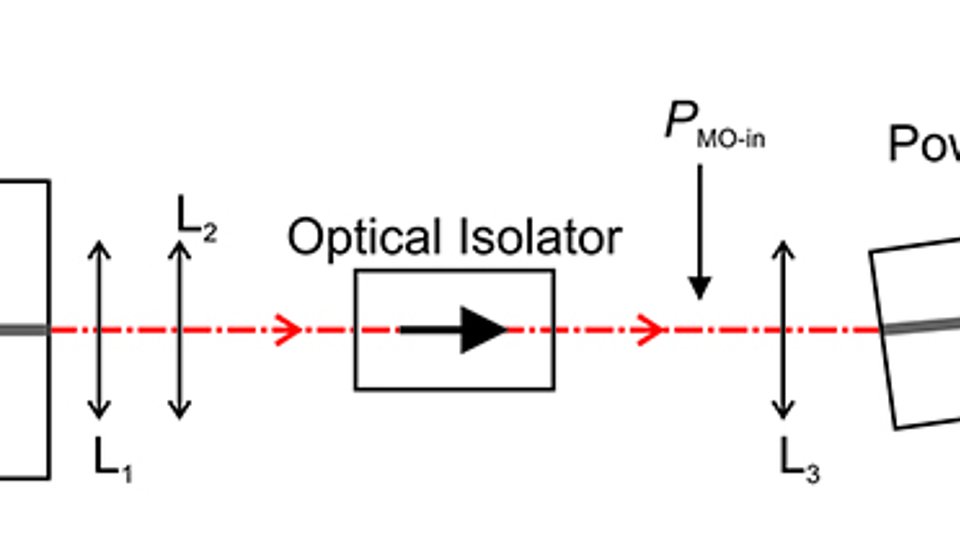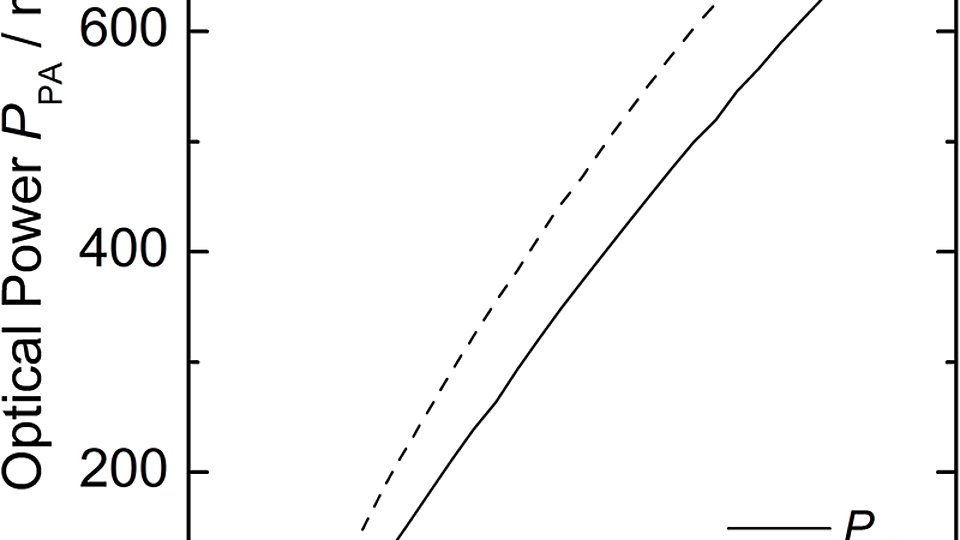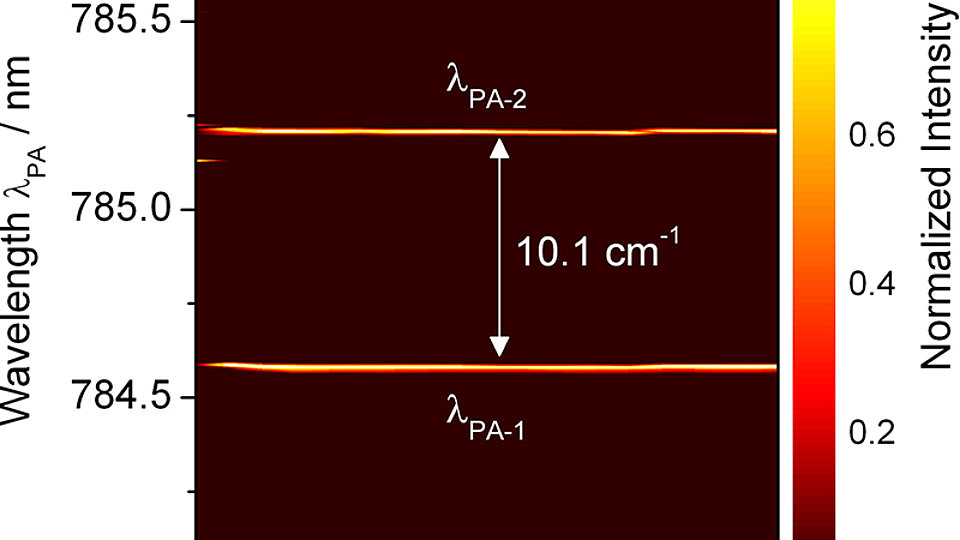750 mW dual-wavelength diode laser light source at 785 nm for Raman spectroscopy
Fig. 1: Dual-wavelength laser light source includes a Y-DBR master oscillator and a ridge waveguide power amplifier.
Fig. 2: Amplified optical output power PPA vs. injection current IPA for both emission lines at 15°C.
Diode lasers with an emission at 785 nm are well established excitation light sources for Raman spectroscopy. Their compact size and low power consumption allow an integration of these devices into portable sensor systems. However, weak Raman signals are often covered by ambient light and fluorescence. The Shifted Excitation Raman Difference Spectroscopy (SERDS) can separate the Raman lines from background signals. Here, light sources with two slightly shifted emission lines are necessary. Recently, monolithic Y-DBR diode lasers have been developed at the FBH. These devices provide two narrow emission lines at 785 nm and an optical power up to 140 mW. Raman experiments are carried out and demonstrate the suitability of these diode lasers as excitation light sources for SERDS. However, at low Raman intensities and short measurement times below one second higher excitation powers are necessary.
Here, an optical power amplifier (PA) is developed which significantly increased intensities of both emission lines without changing their spectral properties. In this concept the mentioned Y-DBR diode laser acts as master oscillator (MO). A 6 mm long ridge waveguide diode with a stripe width of 4 µm is used as a power amplifier (PA).
In Fig. 1 a scheme of the laser system is presented. The emission at 784.55 nm and 785.13 nm is launched via lenses (L1, L2, L3) into the PA. An optical isolator is used to prevent unwanted back reflections into the MO. The amplified light is collimated (L4). With an incident power of 17 mW an amplified optical power of more than 750 mW is generated for both laser lines (Fig. 2). This corresponds to amplification with a factor of about 45. The optical spectra are presented in Fig. 3. A single mode operation with a spectral distance of 0.62 nm (10.1 cm-1) and a spectral width of < 10 pm (limited by the spectral resolution of the spectrometer) is achieved for both amplified emission lines. Here, the side mode suppression ratio is > 50 dB without change in spectral position over the whole power range. This enables a flexible choice of excitation power for Raman spectroscopic experiments with respect to the sample under investigation and avoids a re-calibration of the measurement system. Therefore, such light sources are well suited for Raman spectroscopy and SERDS.
Publications:
M. Maiwald, A. Klehr, B. Sumpf, G. Erbert, G. Tränkle, "Dual-Wavelength Master Oscillator Power Amplifier Diode-Laser System at 785 nm", Photonics Technology Letters, IEEE Volume:26 , Issue: 11 pp 1120-1123 (2014).
M. Maiwald, B. Eppich, J. Fricke, A. Ginolas, F. Bugge, B. Sumpf, G. Erbert,
G. Tränkle, "Dual-wavelength Y-branch DBR diode laser at 785 nm for Shifted Excitation Raman Difference Spectroscopy", Applied Spectroscopy, status: accepted
J. Fricke, A. Klehr, O. Brox, W. John, A. Ginolas, P. Ressel, L. Weixelbaum, G. Erbert, "Y-branch coupled DFB-lasers based on high-order Bragg gratings for wavelength stabilization", Semicond. Sci. Technol., 28, 035009 (2013).
FBH research: 26.05.2014


